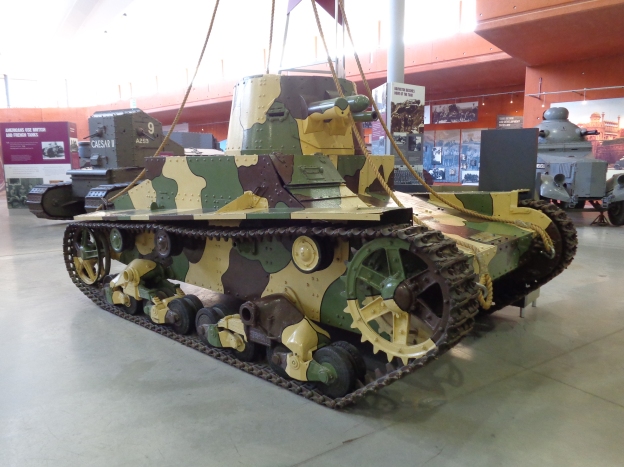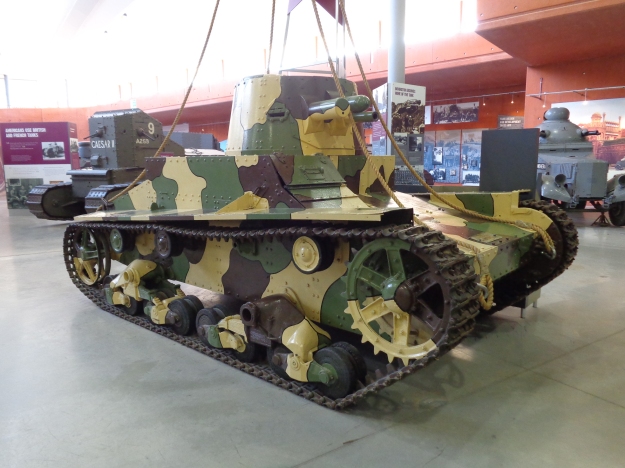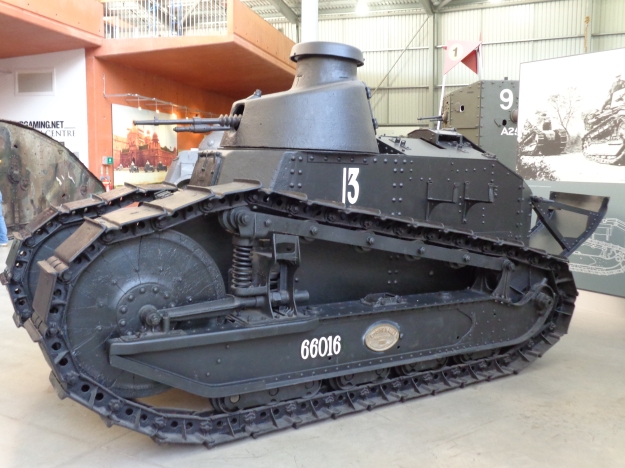UPDATE: I know that this post has become very popular in 2019. It is however meant for version 3 of the Flames of War game. Full version 4 for late war is coming June 2019 which will put the post out of date, although background information will stay the same. But I hope to see the minor nations reemerge for version 4 over the next couple of years.
WWII was a global war and while we tend to hear mostly about stereotypical big nations, like the stubborn Brits, the heroic Americans, the horde of Soviets, the ingenious Germans, the fanatical Japanese, the stupid French or the cowardly Italians, there is a lot more to it, that these stereotypes and even then they only cover only a small number of the nations involved. When designing a game and to make a nation appealing so that players would actually want to play that nation, the game designer has to focus on the positive sides of stereotypes and thus we tend to forget about the smaller nations.
Many smaller nations contributed a lot to the war, for instance Romania was the fourth largest contributor of manpower to the allied cause after she changed side in 1944.
As WWII also encompassed many smaller nations either that got swept up into it or were motivated by different reasons to join the war. Many of the smaller nations had either limited arms industry or were possibly occupied and thus had to rely on volunteers and donations from other warring nations and thus were often trained and equipped similar to their host country. Without enough funding, manpower or training, these were often swept up into larger allied forces although some managed to fight as independent brigades within other national forces.
Flames of War as a WWII game does play a lot on (positive) stereotypes to add some favour and interest to all the different playable nations. It also allows for some minor nations to be played. However as Flames of War is also a commercial product, there is an interest in a limited product range that can sell while keeping low stocks. A lot of the focus has therefore been on small nations that used the same equipment and formations from other nations which means they can easily be represented with existing products but make for a bit of a of a different painting and modelling challenge.
In this post I will examine some of the smaller national contingents in the late war period, which can easily be represented by models of the existing parent forces.
Great Britain
The British Forces were one of the more diversified armies. With a lot of countries already occupied it was only natural to attempt to recruit exiles, expats and people trapped outside of their homelands for their liberation. For instance the merchant navies of Norway and Denmark did provide some recruitment as did overseas citizens such as immigrants to Canada or USA from all European nations. The Danish volunteers were generally assembled in “the Buffs” or Royal East Kent Regiment due to its connection with the Danish Prince George. The Buffs raised several battalions but apart from no. 1 to 5 and no. 7 battalion most were used for training and home defence.
I have been unable to find a source, but it is my belief that many of the smaller national contigents were raised as armoured or mechanized brigades or divisions as these would require less manpower for the same unit frontage.
Czechoslovakia
Czechoslovakia was one of the first countries to be occupied. It was done even before the outbreak of hostilities. Czechs had slowly been making their way to the UK and enough had joined for them to form an infantry brigade, this was later converted to an armoured brigade which joined the fight in August 1944. With a smaller number of troops it was designed to be a fast mechanized force with cruiser Cromwell tanks and mechanized infantry however it found itself wasted in the siege of Dunkirk for which a small and mobile force was wasted.
The Czech also deserve mention for their contribution of trained fighter pilots during the Battle of Britain but that is for another day.
Czech Forces in Flames of War
The Czech lose British bulldog but does not really need it anyway being mostly an armoured force but instead get a special rule called Rychla meaning rapid and allow sthe units with the rule on skill checks to move an extra 4” in the shooting phase instead of shooting.
Another interesting little gem is that the brigade also known as CIAB (Czech Independent Armoured Brigade) to use its heavy AA guns for bombardments, a tactic which was used during the siege.
The briefings allow for Armoured and Motor companies but are otherwise much like their British counterparts. For a bit more infantry teams if needed, Free French (FFI) forces can be attached instead of motor platoons.
Click to access Czech-Armoured-Brigade.pdf
Belgium
Belgium was invaded in May of 1940. The bitter fighting lasted for a few weeks before the Belgian army was forced to surrender but some politicians including the minister of transport Jaspar urged to continue the struggle and rather than surrender hoped the troops would follow the British and be evacuated from the continent. The men were reorganized in Wales as the FBGB (Belgium Forces in Great Britain). The force grew from emigres and evacuated soldiers and in 1942 plans were drafted up on how to make it into a homogenous fighting force. Another source of man power was Belgian Congo which also contributed to the allied campaigns in North Africa. The new force was named Brigade Piron after their commander major Piron. It consisted of three motorized infantry companies, an armoured car company and support companies. The Brigade reentered combat in August 1944 in Normandy and was meant be a fast force and scoot along the Channel Coast. The force went on into Belgium and the Netherlands but by November the force was worn out and needed refitting and was removed from the line. During this time with the influx of new volunteers the infantry was reorganized as a rifle brigades with the companies becoming battalions and the armoured car squadron became the start of the first armoured regiment.
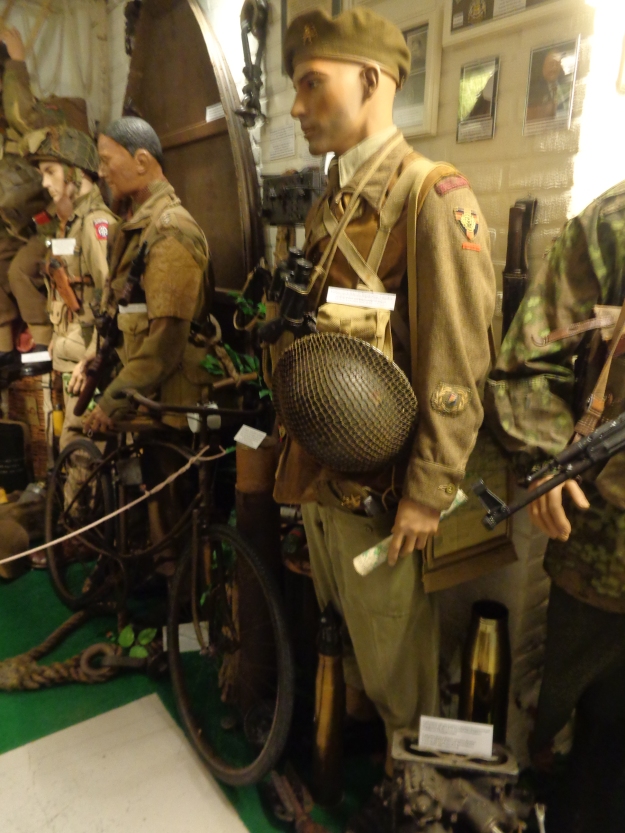
Betuws Oorlogmuseum, example of uniform from Brigade Piron
The PDF briefing is taken from Normandy to the advance into Holland. They are trained in British methods and thus get all special rules except British Bulldog. In addition to that their recce units get the special rule Local Knowledge which allows them to reroll disengages due to their knowledge of terrain and language.
The armoured car squadron is special in that due to the lack of manpower they do not have an armoured car infantry support platoon nor a heavy platoon. The HQ is interestingly enough equipped with Daimler Is.
The armoured car platoons are equipped with 1 additional Daimler I which I have quite mixed feelings about as 5 vehicles are difficult to move around and hide but the larger platoons give it more combat power.
The motor infantry companies are interesting in that they were organized as motor platoons but did not get M5 halftracks instead they received trucks. On top of being confident trained having small motor platoons makes it a very brittle army.
The motor companies are weak in having much fewer AT guns than their British counterparts however for artillery the Belgians have 12 gun 25 pounder batteries which makes for an interesting bombardment.
Support comes in three flavours which are mutually excluding US or British early or late Support. The British early support is for fighting in the Normandy area and include paras, the late is during the Belgian phase when they supported British armoured divisions and finally the US phase where they were fighting alongside US forces.
Click to access Belgian-Brigade-Piron.pdf
I believe the briefing would not be completely unsuitable to use it for Princes Irene which was a Dutch legion much similarly organized.
Poland
There were enough volunteers to form the Polish Army in France of some 85,000 volunteers and while many unit were still forming these took part in the battle of France with some 20,000 escaping the fall of France before being pulled back to Great Britain. During this time they spent their time in garrisons building coastal defences in Scotland. It was decided to form the Polish I Corps. Despite its name, it never fought as a united corps but was split up, the Polish 1st Armoured Division fought with the first Canadian Corps, the 4th infantry division and the 1st independent parachute brigade and 16th independent armoured brigade. The 4th ID never saw combat but has used for coastal defence but a Soviet organized Polish 4th division did. These are not to be confused.
A lot of Poles fled Poland through Rumania in the beginning of the war to continue to fight against Germany of there. This led to the formation of the Carpathian Brigade which found first in the Middle East. It was later absorbed into the Polish II corps (with volunteers from the Soviet Union) and fought in France and Italy.
Following the Yalta conference where it was decided the Poles would not go on to liberate their homelands there was a sense of betrayal. The division stayed on duty until 1947 at which point it was disbanded but many of the men never returned home but chose to settle in exile in particular in UK.
Polish Forces in Flames of War
Polish forces in British service gain a special rule called “For your freedom and ours” which allows 2iC to reroll morale checks as well as the company command team to reroll company morale checks. This makes the Polish company a not more resilient. On top of this all Polish units are fearless.
There are two main sources for Polish forces; Polish First Corps is split across several books and briefings and the Polish Second Corps from Road to Rome.
The First Polish Armoured Division
It was first equipped with Crusader tanks but these were replaced in early 1944 with Sherman tanks and the division trained and waited impatiently to be committed. Following the Normandy landings the division was committed and attached to the First Canadian army and played a key role in the closing of the Falaise pocket.
The Polish armoured division is basically a British armoured tank force however has they were under strength they deleted one platoon per squadron (company) but having received full complement of Sherman Fireflies the HQ section can buy an additional one. The armoured recce squadron is equipped with Cromwell tanks have cautious move and thus makes for a bit of an interesting force as a price it completely lacks fireflies. The rest of the force is basically mech and standard infantry. All units comes as fearless trained but otherwise work as their British counter parts.
Click to access Polish-1st-Armoured-Division.pdf
First Independent Polish Parachute Brigade
It can be found in the Operation Market-Garden. As all British airborne forces are already fearless, the difference between the Polish Parachute and British Parachute companies are in the support. The British was dropped on the North side of the Rhine and fought alone against the Germans, the Polish who were supposed to reinforce them were dropped on the South side and saw the British ground forces catch up to them, so instead of the British relying on the parachute division for support, the Poles can rely on XXX corps with their armour.
The Polish II Corps
The Polish II Corps fought in Italy and is included in Road to Rome and follows the normal British company layout. However it comes in two flavours an early trained and a veteran trained version. It includes rifle, armour car and armoured recce variants.
Greece
The Greek 1st Brigade was formed in Palestine in 1941 from soldiers evacuated from the failed intervention against the German invasion of Greece and the invasion of Crete and overseas emigrants. The brigade took part in the battle of El Alamein and performed well. A second brigade was formed in 1942. However in 1944 a struggle over who would rule Greece after the liberation broke out between democratic and communist branches of the army and the communist troops mutineered. The most reliable of the troops was reformed as the 3rd Mountain Brigade. The 3rd Mountain Brigade was sent to Italy where they fought in the battle of Rimini before being deployed to Greece to deal with a communist uprising in the wake of the German-Italian withdrawal from the country.
In Flames of War it is basically a British rifle company with mountaineer special rules, the other Greek special rules are more or less renamed British ones. As it is only brigade strength the support elements come from Canada or New Zealand as historically correct. The only big change I can find is a much reduced number of carrier patrols which is expected from troops meant to be fighting in rocky and broken terrain.
The Jewish Battalions
Some 30,000 Palestinian Jews took up arms against the Germans during WWII as part of the British army although these have been largely forgotten. Just prior to the outbreak of WWII British Prime Minister Chamberlain issued the “White Paper” which revoked British support for a Jewish homeland and limited Jewish immigration to Palestine. The Jews were therefore a very overlooked and only reluctantly accepted as a source of manpower however following the fall of France Winston Churchill had a more pragmatic approach and some 15 Jewish battalions were established by September 1940 where they saw combat all across the Mediterranean and in Italy as well as garrison duties freeing up other forces for combat. In September 1944 an actual brigade was formed, the Jewish Infantry Brigade Group which consisted of 1st to 3rd Palestinian regiments and got the title of Brigade due to the including of a Royal Artillery regiment (200th). Even then the volunteers were subject to prejudice as some would dismiss the brigade as a token gesture. None the less the Brigade went on to render valuable services to the Allies in Italy during the final offensives of 1945.
In Flames of War terms this is basically a rifle company but without carry on, sergeant and British bulldog, instead they have Warriors of Giddeon which allows them to move further when moving at the double and Hear O Israel, which allows the 2iC to boost motivation ratings to 3+ which can make a huge difference at the point of contact with both 2iC and CiC nearby 3+ and reroll could be powerful.
A new briefing is coming for Forces of War app.
USA
Through lend-lease a number of nations received American equipment for fighting the war, however some also received US military advisors and training in order to have more smooth collaboration in the war zone hence a number of forces can be played using regular dough boy models.
France
Following the fall of France in 1940 the armed forces of France were divided in those who believed the exile government in UK were the true representatives or staying loyal to the new Vichy France. With the British sinking the French navy in Oran to avoid it falling into German hands and be used to invade the British isles the mistrust and divide between the two former allies grew with Vichy France breaking off diplomatic relations.
A number of separate standing forces were still scattered across the world and now had to decide which side to support. In North Africa and the Mediteranian area French forces generally stayed loyal to Vichy and some even fought against other Frenchmen during the allied invasion of Syria and during the landings in North Africa under Operation Torch some Vichy forces initially resisted the US forces as ordered by their CIC Admiral Darlan. The Torch landings actually had quite a large US profile as the Oran incident had not been forgotten and the Brits were mistrusted. Even though French forces quickly ceased action this did not exactly put them in a favourable light with the allies and when they changed side equipment was slow in coming and often second rate.
FEC
Following the campaign in North Africa it was decided to build a French force, the FEC (French Expeditionary Force) to fight along the allies. The sources of the troops varied with some 60,000 colonial forces, emgires and some 100,000 local volunteers of both French and native North African descent. In the end 8 divisions were formed along US lines and equipped and trained but creating a unified force too time and forces were generally not ready to join the fighting in Sicily. During the fighting in Italy the FEC was attached to the US Fifth Army where they played a major part in breaking the Gustav line. After that they went on to land in Southern France and went on to liberate France and fought on into Germany.
The FEC in Flames of War
The FEC is included in Road to Rome. The French can field two basic companies, the Tiraileurs which is basically a rifle company and a Spahi which while taking part in the late war period of the game still due to the second-rate nature of their equipment is still equipped as a mid-war recon company. This makes the Spahi quite unique and could be a fun way of slowly building a midwar force into a late war. In terms of special rules the French loses the technologically advanced automatic rifles, excellent communications and under command but instead they get assault troops to reroll rallies, reroll counter attacks and mountaineers which makes them amazing assault troops at the rating of confident veterans.
One unit that deserves mention even though it does not look like US forces is the 4th Division Marocaine de Montagne (DMM). It consisted mainly of Goums which were fierce mountain tribesmen of Morocco. While they received American weapons they often wore tribal clothes instead. The goums are basically an infantry company with different rules making them more aggressive in close combat.
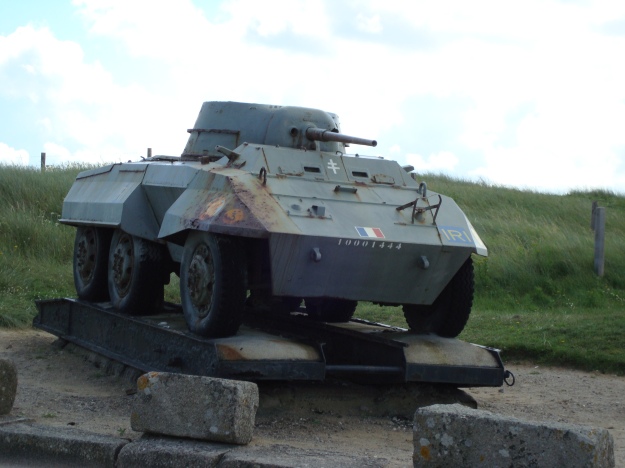
Leclerc Monument M8 Greyhound with the Lorraine cross markings used on many French vehicles
The French Second Armoured Division
The French Second Armoured Division was a different source of French soldiers. The core of the division initially took part in the fighting in Norway as an independent tank regiment. They were evacuated to Great Britain after the fall of France and thus formed the first core of the Free French Forces under DeGaulle. They were sent to the French Central African colonies to rally them to the allied side. The regiment’s commander was Phillipe Comte de Hauteclocque but in order to protect his family still in France, he changed his name to Leclerc. Under Leclerc they rallied Cameroon and Gabon and went on to conduct raids on Italian held Libya before joining up with the British 8th Army. As an already formed force they did not join the FEC but was send back to UK after the fighting in North Africa came to a close to take part in the Normandy invasion. They were refitted with US equipment as all other French forces and as such was organized as an American armoured division. They came ashore in August of 1944 to take part in Operation Cobra and the battles at Falaise pocket. They would later liberate Paris and go on to join the FEC in France.
An interesting subunit was the 9th company of the 3rd battalion of the division as this unit consisted of Spanish volunteers. Following the Spanish civil war a number of Republicans fled to Spain. Following the fall of France the Vichy French started deporting them back to Spain but with Spain under nationalistic control, they faced persecution and thus many of them fled to join the French resistance and from there some went to join the Free French Forces and enough joined to become a full company.
Tank companies were slow to receive Shermans with 76 mm and 105 mm guns and thus these are only present in small number in the briefing.
Click to access 2DBIntelBriefing.pdf
Brazil
One of the most unknown contributors to the fighting in Italy was the Brazilian expeditionary force (FEB). The Brazilian army was originally organized along French lines having had military observers in France during WWI. In the interwar period Brazil became a dictatorship in 1929 and as such developed new German ties in the 1930s while also maintaining economical ties with the US. With interests on both sides Brazil was reluctant to join the war and it was not until the Japanese attack on Pearl Harbor and the subsequent German declaration of war on USA and uboat campaign which also hit Brazilian ships, that Brazil took an allied stand. The Brazilian forces were not prepared for a modern war and as such they became recipients of US lend-lease and received American equipment which replaced original French artillery and German small arms (which had been bought in the interwar period). The expeditionary force was organized and retrained as a regular US infantry division which started in 1943 although this went slowly. In July 1944 when the first troops arrived in Italy they had still to be equipped and trained. The Germans joked that the day the Brazilians would actually fight, would be the day the snakes started smoking. So the divisional motto because “when the Cobra smokes” and their unit patches featured a smoking cobra.
The Brazilian force is rated Confident Conscript (although also a Trained variant can be fielded) and this makes for the most interesting change. This means that the infantry company is typically filled with support weapons and full platoons and thus play very different from regular US forces. The Brazilians did not use M1 Garands and as such lose Automatic Rifles and Truscott Trot but get to reroll tests to dig in and the 2iC get to reroll motivation tests. So if the US rifle company simply does not have enough flavour I recommend this one but be warned, even though there is a ton of troops on the table getting hit at 2+ makes staying alive difficult. A small interesting option to the rifle platoon is the option of equipping one platoon with SMGs.
Finland
The Finnish army did contain a number of non-Finnish elements. One source of manpower was a small number of Swedish volunteers. As Finland is bilingual there were also Swedish speaking regiments in the Finnish army. While there are no special rules for Fenno-Swedish troops these would be equipped as other national Finnish infantry. Other foreign troops in Finnish service were Estonians and can also be represented by Finnish infantry forces.
Soviet Union
The Soviet army did incorporate elements from other nations such as Polish and Estonian although these do not have their own special rules as such. A Polish Strelkovy company (platoon) is featured in the Warsaw uprising briefing but do not have their own list.
For more inspiration on Estonians in Finnish, German or Soviet services, see:



